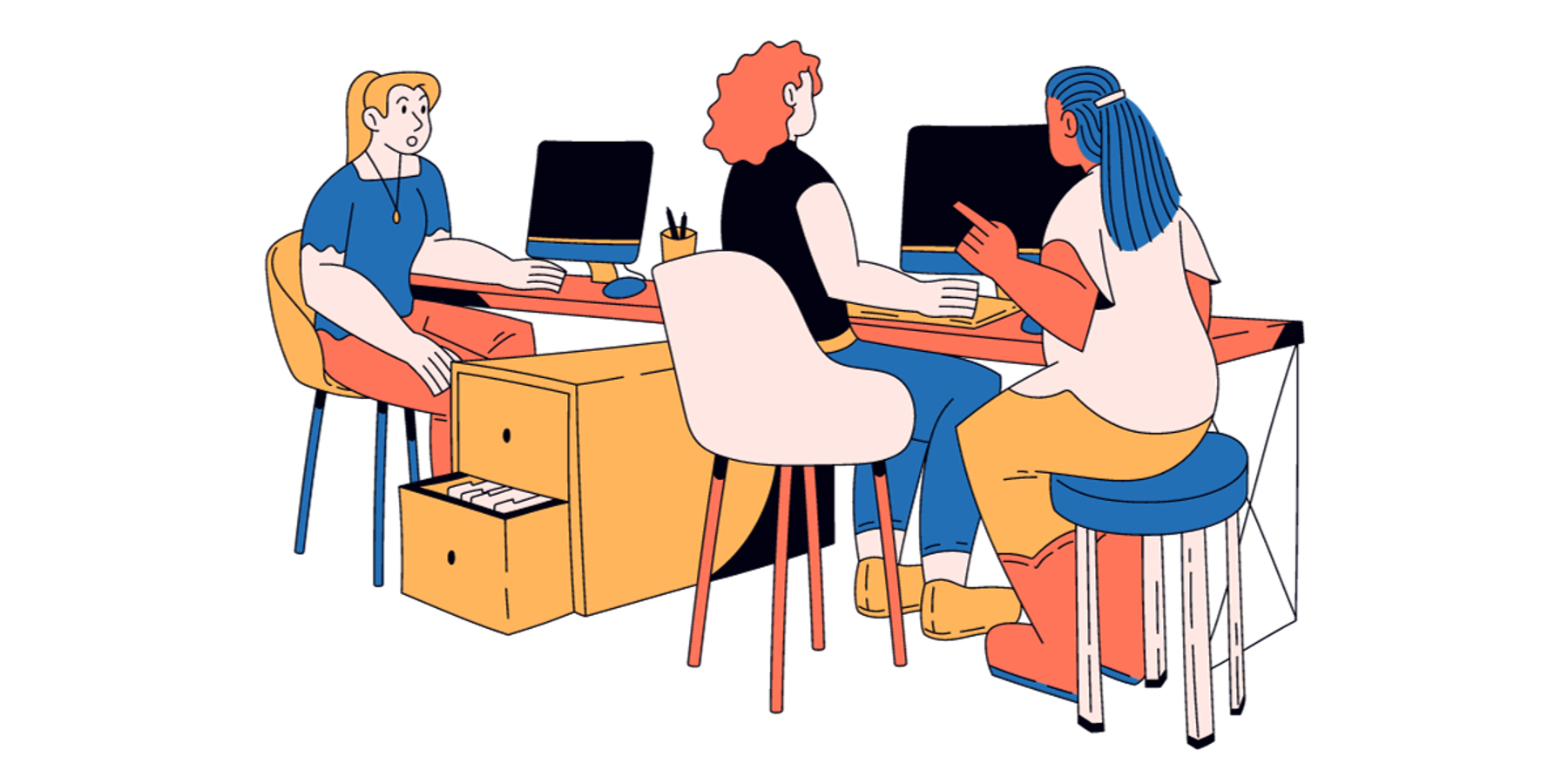Everyone thinks, interacts, and processes their surroundings differently. Different types of neurodiversity encompass a wide spectrum of cognitive abilities. This diversity comes out in behaviors even at work.
Neurodiversity is quite common. Dyslexia — which causes difficulty in reading — affects about 20% of the U.S. population. An estimated 2.2% (5.4 million) of the adult U.S. population has autism spectrum disorder (ASD). Some estimates put the overall number of neurodivergent people at 15-20% of the global population, while others go as high as 30-40%.
Unfortunately, research indicates that many neurodivergent individuals will hide or mask their neurodivergence in order to avoid stigma — this, when neurodiverse people often have unique strengths that can make big impacts on teams and projects. But stigma and a lack of awareness and accommodations persist; HBR found that up to 80% of neurodiverse people have trouble finding employment.
A neurodivergent person should never be viewed as having deficits of certain skills or abilities. Instead, neurodiverse folks can be highly talented at certain skills or tasks, yet find others challenging — just like neurotypical people. This article will outline some different types of neurodiversity and how workplaces can best identify and engage workers’ unique cognitive talents.
What is neurodiversity?
The term neurodiversity was coined in 1997 by sociologist Judy Singer. A succinct definition we like to use is this:
Neurodiversity is the range of differences in people’s unique brain functions and behaviors that impact the way they process and store information, experience different stimuli, and interpersonally relate to and interact with others.
Neurodiversity is built into being human. We all exist within neurodiversity, just like we all exist within diversity. Some of us are neurodivergent — with cognitive and neurological development and states that are considered “atypical” — and some of us are neurotypical — a term coined within the autistic community and used to refer to people whose cognitive and neurological development and states conform to what’s seen as “typical.”
Neurodiversity as a movement describes the work of advocating for and supporting people who are neurodiverse. Neurodiverse is the adjective form that can be used to describe a group of people, and neurodivergent can be used to describe a person.
Key types of neurodiversity & definitions
Autism spectrum disorder
Autism is a neurological developmental disorder characterized by repetitive patterns of behavior and difficulties with social communication. Struggling to deal with change, mandatory actions, or others’ points of view can be elements of this learning difference. Historically, “high functioning autism” has sometimes been used to describe cases where the behavioral and communicative elements of autism are present, but do not impact on intelligence. However, across the neurodivergent spectrum, using terms like “high functioning” and “low functioning” is falling out of favor.
Attention Deficit Hyperactivity Disorder (ADHD)
ADHD can feature inattentiveness, impulsivity, and hyperactivity, and is another form of neurodivergence. Historically, some people were diagnosed as as ADD due to having all the traits of ADHD with the exception of hyperactivity. Today, the distinction is outdated, and ADHD is the umbrella term used for all. There are different subtypes of ADHD (inattentive, hyperactive, and combined type).
Dyslexia
Dyslexia is a learning difficulty that primarily affects the skills involved in accurate and fluent word reading and spelling. It can also include challenges with information processing, short-term memory, and timekeeping. Other characteristic features of dyslexia are difficulties in phonological awareness, verbal memory, and verbal processing speed.
Dyspraxia
Developmental coordination disorder (DCD), also known as dyspraxia, is a learning difficulty affecting physical coordination, movement, balance, and organization abilities. Motor difficulties include poor hand-to-eye coordination and spatial awareness, which can make it difficult for people with dyspraxia to carry out everyday functions.
Other types of neurodiversity
- Dyscalculia: Developmental Dyscalculia (DD) is a specific learning disorder that is characterized by impairments in learning basic arithmetic facts, processing numbers, and performing accurate and fluent calculations.
- Dysgraphia: Dysgraphia is a specific learning disability that affects written expression. Dysgraphia can appear as difficulties with spelling, poor handwriting, and trouble putting thoughts on paper. Dysgraphia can be a language based and/or non-language based disorder.
- Obsessive Compulsive Disorder (OCD): Obsessive compulsive disorder (OCD) is a common mental health condition where a person has obsessive thoughts and compulsive behaviors.
- Tic disorders: Tics are sudden twitches, movements, or sounds that people do repeatedly. People who have tics cannot stop their body from doing these things. The most common tic disorder, Tourette Syndrome, is an inherited, neurological condition. The key features are involuntary and uncontrollable sounds and movements. This is a complex condition and a large number of people with the condition may also experience other disorders or conditions, such as anxiety.
Engage diverse cognitive talents at work
We’ve addressed how to recruit and hire neurodiverse talent before. We have also discussed how to foster an inclusive environment and support neurodivergent employees.
Here are some things workplaces can do to leverage the considerable cognitive talents of neurodivergent employees.
Spiky profiles
Many neurodivergent people in the workforce may have a sense of their talents and challenges. But companies can help employees and managers find out with more certainty. The best way to determine talents and challenges is through “spiky” profiles.
A spiky profile quiz consists of a series of questions analyzing a person’s work-related or personal strengths and areas for growth. Spiky profiles analyze categories such as verbal skills, memory, visual skills, processing speed, analytical ability, numerical skills, and more. For everyone, some of these skills will be easier and some will be more challenging.
In a neurotypical person, they are more likely to have a profile that is relatively flat — with just a few small peaks and valleys. Essentially, a neurotypical person will be at least “OK” at everything and won’t struggle that much with any single skill.
The range of abilities for a neurodiverse person will be considerably more extreme, potentially involving exceptional talent in certain areas and challenges in others. The chart appears “spiky” as a result, with large peaks and valleys.
Spiky profiles help to emphasize the significant talents of neurodivergent people as well as the challenges they encounter.
Patterns and detail
People on the autistic spectrum often have great attention to detail and focus. This means they are able to search through a lot of information for specific content and perceive patterns where neurotypical people may not.
Research from the Rand Corporation suggests that people with autism may be well-suited for work in the national security field. Case in point: Alan Turing, noted mathematician and pioneering computer scientist on the autism spectrum, helped crack the “Enigma” code used by the Nazis in World War II.
When interested in a topic, people with ADHD can also be hyper-focused and committed to specific projects and tasks, making them super efficient and deadline-driven.
Data analysis, auditing, and research are just a few common workplace tasks that require focus, recognition of patterns, and attention to detail.
Communication
There are common misconceptions that people with dyslexia cannot read or write and therefore are poor at communication. In fact, communication is often a strength. Having to explain life with dyslexia, as well as finding ways to use personal strengths to adapt, means that people with dyslexia can be great storytellers and public speakers.
If there’s a person with dyslexia on your team with a high spike for verbal communication, find opportunities to showcase this skill. Hosting all-staff meetings, MC’ing the holiday party, and other presentations might be just the thing.
Leadership
Many talents of neurodivergent people lend themselves well to leadership. Research has shown that people with autism are more likely to make an ethical decision than their neurotypical counterparts.
People with both dyspraxia and dyslexia are often great innovators and think outside the box. Dyspraxics often learn to develop soft skills such as active listening, empathy, and when to delegate tasks to others.
Remember also that workplace policies regarding neurodiversity should always have neurodivergent people at the table, centering the motto “nothing about us, without us.”
Leveraging talents for different types of neurodiversity
Everyone has strengths and areas for development. For people with different types of neurodiversity, these strengths and challenges may be more dramatic than neurotypical people. Heightened skills such as attention to detail, recognitions of patterns, hyperfocus, etc lend well to many workplace tasks. Having everyone’s neurodiversity mapped out through spiky profiles will help colleagues and managers understand which unique talents to engage and which need growth. Search through our resources for employers to learn more about types of neurodiversity in the workplace.




